Look what we made! Artisan Sausages!
And, yes, we used pig intestines for the casings! They are available everywhere throughout the former Yugoslavia in the fall: preserving season. But, Pava (Vanja’s mother) managed to get some in from her local butcher just for us and our summer sausage making project. I was looking to find an artisan cheese maker this summer in Bijelinja, as I adore sir mladi, or a young gelatinous (without any gelatin) unpasturtized cheese found throughout this region. When I was talking about this, Vanja suggested we also make the traditional domestic regional sausage. I was in! Sausage making is another project I have been looking to get into, so this would be my introduction to it.
As I wrote last summer, the people here would scoff at the 100 Mile Diet. Certainly, they would not understand it. All in the countryside live the 100 Metre Diet. So, as soon as we arose, off to the butcher we went to get the meet for our sausage making project. This was to be a small batch. In the fall, the family would make a batch four to six times this size from their own pigs with their own meat and then smoke most of it in their own smokehouse. But, there are no pigs to be butchered in July, so off we are to the family butcher early in the morning to choose our pork and get it ground for our sausage making project, this day.
We chose some side meat and some back shoulder meat. I have been to this butcher many times and his shop is very busy and he knows what he is doing.
This butcher is used to doing what his customer wants and offering advice. He is also used to taking it, as most of his customers have butchered their own animals throughout some part of their life, and they watch him like a hawk to make sure he is “meeting their personal standard” of butchering.
Every butcher in the region has smoked meat hanging in their store. Smoked (or double smoked) and dried bacon, ribs, and sausage as well as tenderloin and other cuts are all available everywhere. Everyone has their favourite butcher and smoker in the city. In the country, most do their own, and take great pride in this family tradition. A charcuterie platter of homemade smoked and cured meats are served in every home and the host and hostess are always eager to please you with these precious fruits of their labour. If they have milking animals, they will be serving you house made cheese, as well.
Petar is Vanja’s father and he is a very proud father. Just around the corner from the butcher is the local open air market in Bijeljina which I wrote about in detail last summer. We needed to stop here for the garlic and the paprika for the sausage. There is nothing like the paprika in this area. It is so fresh and fragrant. When in a paper pag, the oils from the peppers seep into the bag; that’s how fresh it is!
I have my favourite place to buy it from in Belgrade, but at this market, you can ask to taste of sample. All are eager to sell, so you will know what you are buying. Tourists are non-existent. I am definitely a novelty. My English and broken Serbo-Croatian brings curious glances and questions and obvious gawking, to be honest. Sometimes, like today, I just watched. But, my camera still draws attention in these parts.
With everything we need in hand, Vanja, his dad, and I head back home from breakfast. The aroma from the Smokehouse is captivating. Pava is cooking up her usual morning feast. In the summer, the Smokehouse (above, right) serves as the outdoor kitchen as the house and yard are so hot. The lacy door is designed to keep out the bugs and you will find this charming white dainty gracing the doors throughout the entire countryside and the cities, as well.
We show Pava out paprika and meat to ensure it meets her approval. Domestic artisan sausage making is a family affair. She fussed over the quality of the meat as she bent to smell it. She approved.
All was set in the refrigerator to make getting the first meal of the day out the major project. You can see the Pighouse right behind the Smokehouse. There will be pigs living there before we leave. The traditional outdoor sink (everyone has one exactly like this) is used for everything in the summer.
Pava loves surprises and this morning, she had another up her sleeve. She has never made kolacici, but I have had it last summer at our farewell breakfast in Kozarci and really enjoyed it. She never forgets anything you enjoy. So, this morning: ta-da …Kolacici! And, Pava’s Ajvar (detailed instructions for making ajvar are in the text on the slideshow at this link) is a staple for me while there. There is nothing like it, anywhere. So, that was my breakfast. Everyone else had bacon and eggs, too.
Every meal, unless it is raining (hard), is outside all summer long. Everything is outside, except sleeping. This day, the table was moved off of the porch to a cooler area by the side of the house right in front of where we will be making our sausage.
It was more delicious than it looks, but if you have never had ajvar, you have no frame of reference for what I call “roasted red pepper caviar” because it is so labour intensive, yet so worth it.
Pava has grown her own garlic and stored it in braids in her shed. (She grows everything she can.)
It is a really crisp, dense, and pungent garlic: perfect for any garlic dish, but stronger than the ones at our grocery stores at home, so keep that in mind when reading the amount used here.
Did I say this was a family affair? This family works together whenever there is work to be done. It’s time to get down to business and clean a lot of garlic. Everyone helps. Every single person. This is a family affair. Actually, everything is.
That is one of the many things Vanja has brought to our personal relationship. We work together both in and outside of the house. As an independent woman for many years, it took some getting used to. I just expected him to do “his things”, and me to do “mine” and then we would get together for leisure time when everything was accomplished. I have learned a lot from Vanja through our working together and it has definitely enriched our relationship.
We are getting there.
Tuzla, a city nearby, but not in the Republic of Srbska portion of Bosna, has been a salt mining centre for thousands of years. Of course we used Tuzla salt. Pava buys her Biber (pepper) in small packets. The paprika below we did not use as it was not fresh enough. We also needed a little hot paprika for this recipe.
Most of the tools still used in this region and sold at the markets are all hand made. This pestle is a hand made pestle used to crush the garlic.
The car was backed out of the shed and the table set up for the sausage making. I have never seen such an old grinder, and it had been so many years since the family had made sausage that it took a while to figure out how to use the sausage making parts of it.
Pava broke up the garlic in her processor, first, but not too much!
Then Vanja ground it with the pestle until it was mushy. I am not sure why it wasn’t just done like this in the processor. Maybe because there is more control by hand?
This is how it looked when Pava said, “Enough!”
There is no recipe here. This is domestic artisan sausage made through the generations. Pava just knows how much. She poured ample salt into a small bowl and added a small amount of water to it faster than I could take pictures of how much, but my guess from being there would be that she added a quarter cup of salt and a quarter cup of water together.
Now she pours it into the pulverized garlic.
And, directs Vanja to use the pestle again to work the salt into the garlic. This he does until a liquid paste begins to appear; it doesn’t take him long, and the mixture doesn’t change too much from what it looks like below.
Petar gets the meat ready.
So, we have about 5 kilos of pork and to that added approximately a tablespoon of salt, a teaspoon of pepper, two tablespoons of paprika and a teaspoon of hot paprika.
About two thirds of the garlic and salt mixture was also added. The remainder was set aside.
Vanja is a great meat mixer. A tiny portion of the raw meat gets tasted and all tasters agreed that the following was needed: another tablespoon of salt, two more teaspoons of pepper and another tablespoon of paprika.
The intestine casings had been frozen. Pava had thawed them the night before and they must be kept in water so they do not dry out. They are always tied a certain way so everyone knows how to use them.
A little more of the salt and garlic mixture is added so that about three quarters of it has now been used.
Pava (and her 50th anniversary party red fingernails) show me the tie in the casings.
Before the sausage is made, the meat must be sampled. There is an oven in the smoke house that is an electric oven. In this shed, they have the wood burning oven which is used to do almost all preserving: ajvar, jams, pickles, juices, and so on. Today the fire is built to test the seasonings in the meat before the sausage will be made.
The raw meat was again tested and the tasters all agreed that more salt was needed. In goes another tablespoon. Perfect.
Except there is no spice. This domestic sausage is not to be hot, but it must have some heat. Pava goes to her personal stash as what she had originally given us was not hot enough.
So, more heat with the salt and more paprika to balance it: another tablespoon of each.
Vanja has had it with mixing. Enough! Let’s try it!
A generous portion of the meat is fried for testing.
This is Petar’s job. He made the sarma. He made the sausage. He smokes the meat. Now, it is his sons turn, but the cooking is his. He hovers lover it like a mother hen over her chicks.
It smells delicious and tasted incredible. But, I don’t know how it is “supposed to” taste.
All of the tasters agree that this is fantastic sausage: let’s make it. Then, Igor, Vanja’s brother says it needs more garlic. There is an excited discussion amongst them all. Yes, this definitely does need more garlic. When you eat the domestic sausage, you should experience the garlic, immediately.
As there is enough salt at this point, the remainder of the garlic salt mixture is washed and strained and added to the mix. Perfect. Really, perfect. Time to get these sausages made. I could see the anticipation in the eyes of the men. The primordial meat eater rears its head inside of each of them: Grrrr! Arrr! Arrr! Arrr! Meat! We want meat! Let’s get this meat made so we can eat it! Petar redies the intestine by blowing air into it. Yes, that is what you do.
Below, right, Pava shows a close up of the opening.
There were a lot of comments about what lovely clean casings these were. I asked about that: Would you get any that aren’t clean? If so, what would you do?
Well, no. They don’t get any that are not clean from their butcher, but everyone there, except myself and little Vanja, has seen intestines being cleaned for sausages and knows what kind of work it is. That was a bit of a shock.
Below, right is the extra garlic added to the meat, and a teaspoon more of hot pepper was added, as well. I have the recipe below with all of these additions tabulated. (Phew!) The meat is resting while we figure out how to use the grinder.
Igor (Vanja’s brother) is the master of that. He has a very mechanical mind and can usually figure our how everything works. But, this took the entire family because as the family works together, they solve problems together. This is not easy. I am always amazed at how respectful they are of one another’s input. I sometimes want to just have a minute to think alone. This group problem solving initially drove me crazy as it is definitely not efficient. But, it is a process that has clearly build respect within the family unit and I have learned a lot from it.
This is the idea: the entire portion of casing is pushed onto the protruding portion and the meat is pushed into it. The grinding portion of the grinder must be removed first.
We learned that the hard way.
The casing is knotted at the very end, and then the first sausage is pushed out.
Look at that beautiful casing! Links are made by twisting the casing after the segment length you choose.
Double twist, at least.
I was so excited because it was so easy and such a fast process.
But then, the casing broke. We had three portions of casings. The one was very weak and I thought we were exerting too much pressure, but I was assured that this was not the case. When the next two portions of casing were used, it was clear that they were much stronger and not as transparent. We could have taken out the meat and reloaded it, but as we are not smoking these, we did not.
Each time a new portion of the casing needed to be loaded onto the protruding part of the grinder, it took a moment or two to straiten out. Certainly, not long!
Then, the knot was made at the very end, and the sausage was ready to be pushed through.
Sometimes, air would get into the casing. Not often, but it just took a needle to poke into it to release the air pocket.
The twisting happens right as the meat comes out of the machine.
Can you see the difference in the colours of the casings. The redder sausage links are the ones with the weaker casing. Doesn’t this look gorgeous? I was so excited to be doing this! I cannot wait to do it again at home, soon!
Here’s a close up of the difference in the casings (below, left).
Almost done!
The end of the sausage meat in the grinder (above) and our sausages (below)!
We made a lot of sausages! At this point, they can be fried, and eaten fresh, and some always are. Then, the bulk of them, when a much bigger batch is made in the fall, would be hung overnight to drip all wet fat out of them, then smoked for 4 fires, or so (4-5 days) in the smokehouse and hung for two more days to dry cure. These are not a really dry sausage, but they are ready to eat when done and stored in a cool and dry place until eaten. You can buy similar smoked dried sausage at The Budapest Deli in Edmonton, but they are drier than these are.
Again, I don’t eat meat, but these were incredible sausages. Extraordinary. Magnificent. The best I have eaten in my life. Truly.
The only flaw was that they could have been fattier. See the paprika and garlic inside?
The traditional family meal always starts with chicken soup and usually domestic noodles. This time, the soup had knedle: yummy little dumplings.
I had one bite of the meat, ajvar and some rice salad.
Look at the family meal. YUM! Working together and eating together to produce the evening meal. That is empowering.
The meal ended with a piece of Vanja’s birthday cake his brother and sister-in-law had made for him. Walnuts are in almost all cake in the region. This one also had sour cherries in it, also grown throughout the region. The shock was the pineapple! Such an exotic and unexpected surprise for any cake around here!
What a perfect day!
Srpska Kobasica: Serbian Domestic Sausage Recipe
Ingredients:
- 10 pounds of pork shoulder and neck meat (or anything you choose)
- 4 big cloves of garlic per pound of meat, finely chopped
- 1.4 cup water (to add to garlic)
- 1/4 cup salt (to add to garlic)
- 1 tablespoon salt
- 1 tablespoon pepper
- 3 tablespoons paprika
- 1 tablespoon hot paprika
- casings
Instructions:
- Chop garlic and then mash with a pestle; add salt water mixture and work some more with the pestle
- Add all ingredients to the meat
- Cook a sample to taste; adjust seasonings accordingly
- Place casing on sausage maker and make sausages
- Freeze, smoke, cure, or fry: Enjoy!
Serbian Para-Military was circling about our project. I got a close up photo of one (of many) very stupid flies who just would not move when you flicked them away (thus, they were very easy to annihilate!). Ugly, eh? Scroll down. Beavie was hiding.

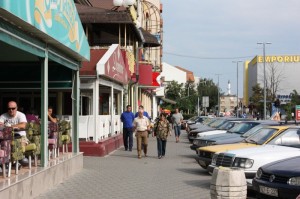




























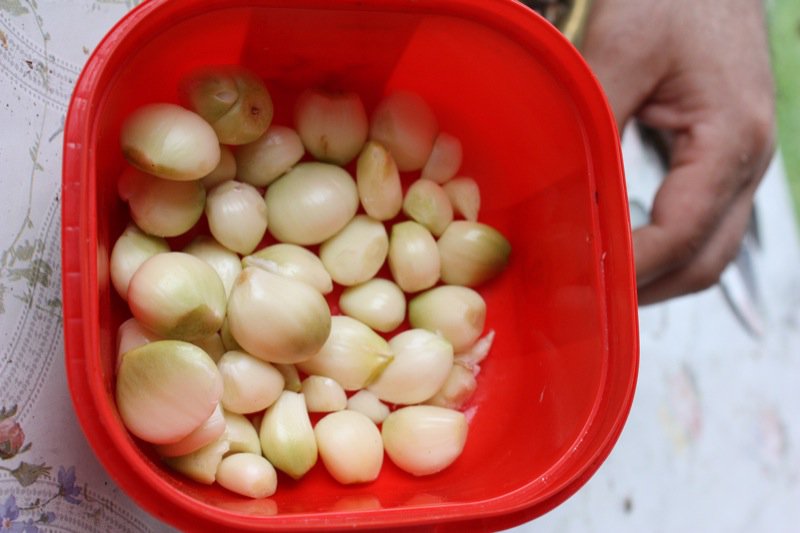









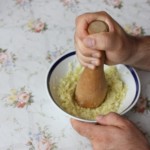
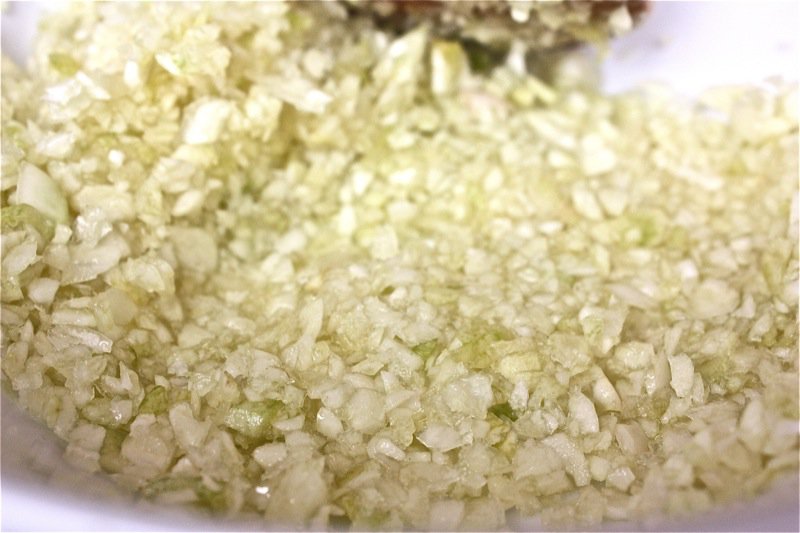












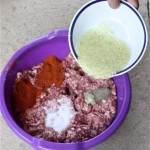
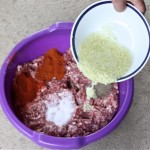







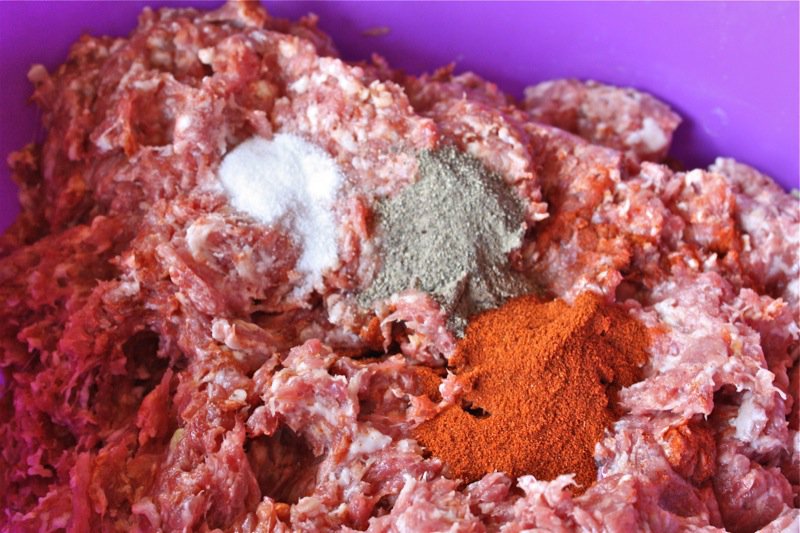



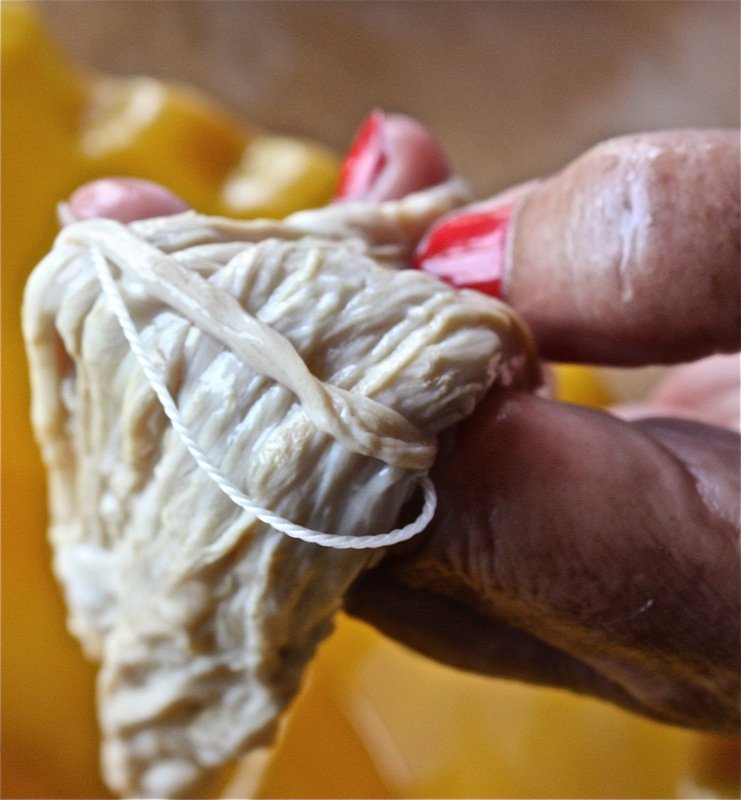




























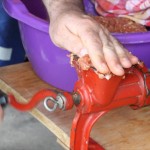
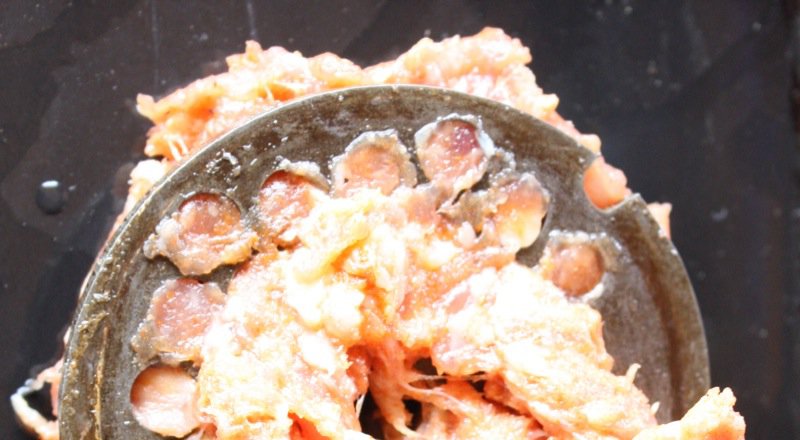





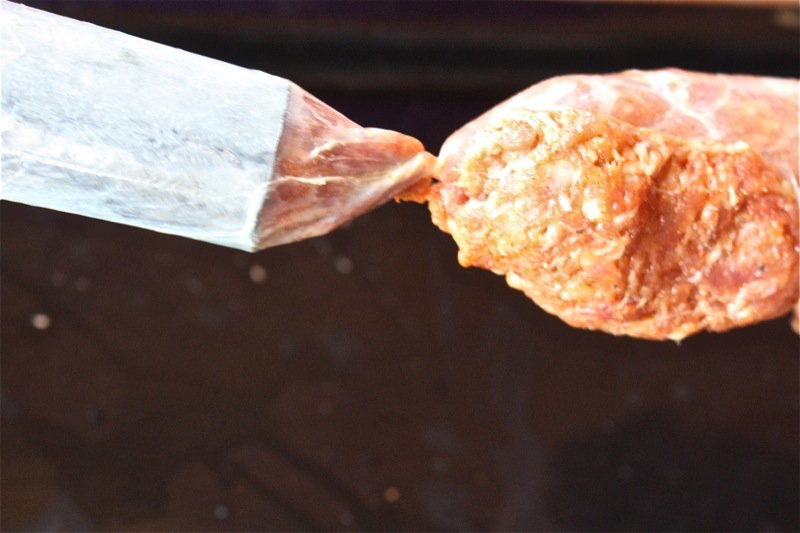






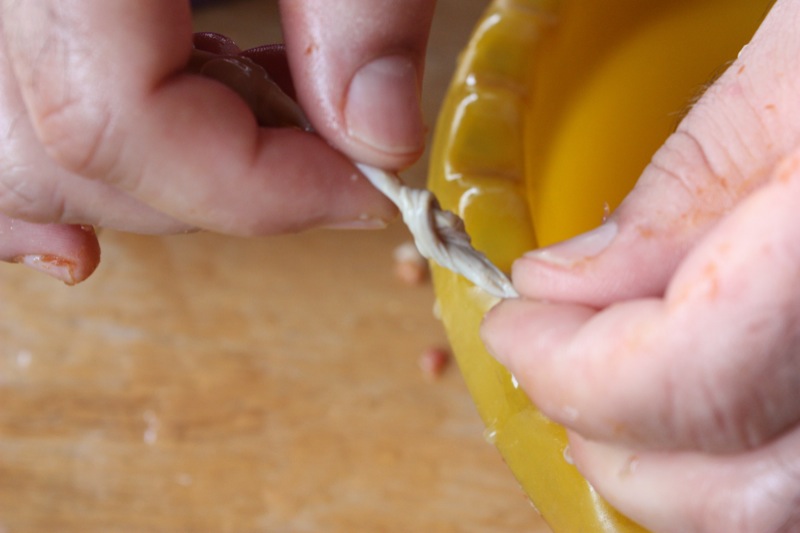
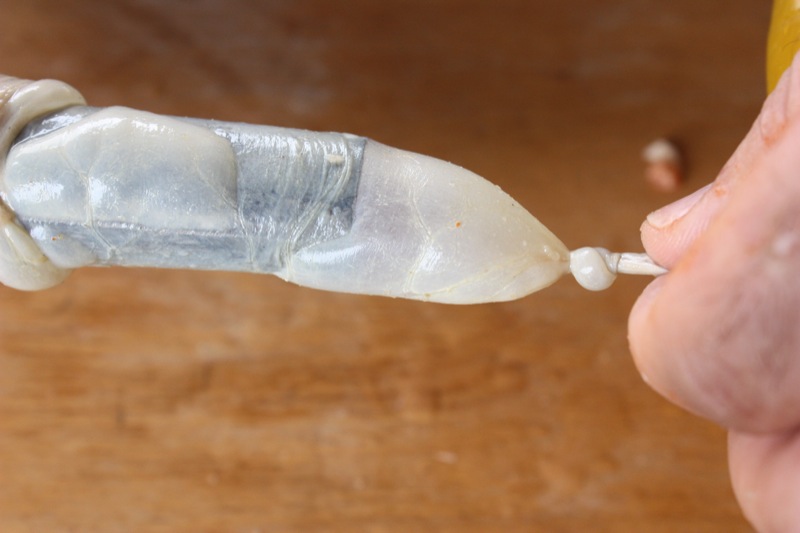





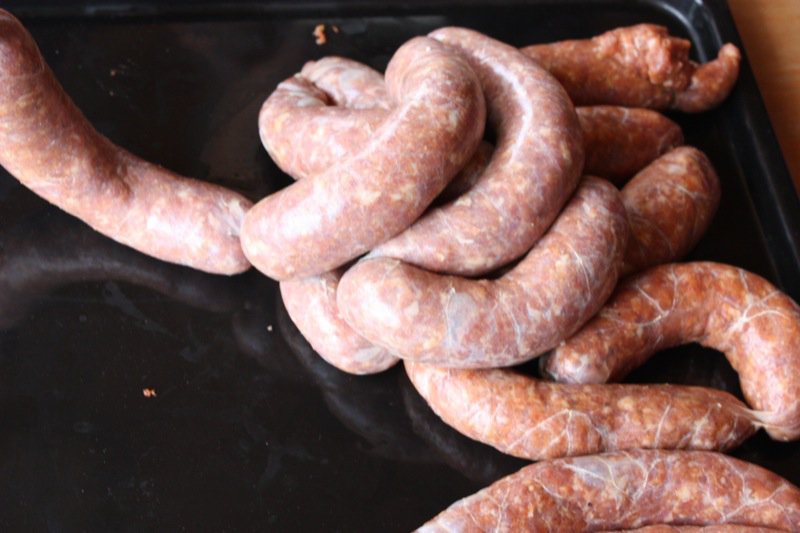



















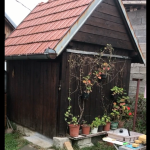








Yum V, wish i was there to try the sausages – mouth watering i bet!
Hi,
I was wondering if there is anywhere I can order some Sremska kobasica here in Canada?
I live in Victoria, BC and would really love to be able and order some Serbian deli.
Thank you in advance.
Sincerely,
Neb Radojkovic
Good luck with your request, Neb. I am certain there are places in Vancouver – but Vicotria? Should be, but don’t know. Have you reached out via Social Media? All the locals I know in Edmonton make their own or buy from our small independent Srbski stores here. There is a shop here owned by one of your fellow countrymen called “The Cheese Factory” and they also make and sell frozen cevapi etc. Our local European Sweetness makes their own burek and cevapi and sells their own smoked meat and sausages and our famous and local Hungarian Deli – called the Budapest Deli is also owned by people from the former Yugoslavia and they sell gorgeous smoked meat and smoked dried cured sausages. Hope this helps!
🙂
Valerie